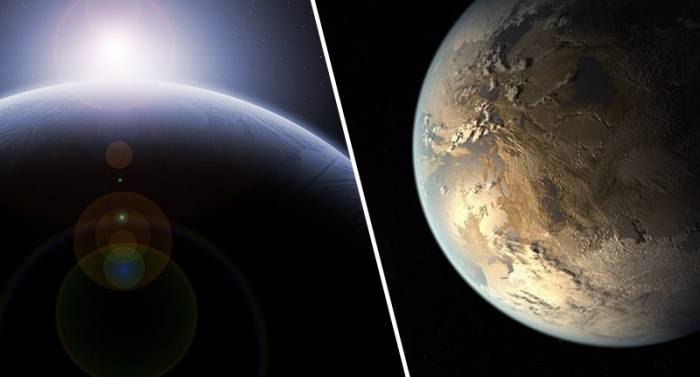New observations of the planets orbiting around the Trappist-1 star – which caused a stir when scientists found a whole set of Earth-like worlds circling it last year – show more detailed information than ever about what life could be like on those planets. When the system was found, scientists described it as a "holy grail" discovery.
Scientists suggest that the planets are made mostly of rock, like the Earth. About 5 percent of their mass is made up of water – far wetter than Earth, which is only 0.02 percent water.
“No one ever would have expected to find a system like this," said Hannah Wakeford, from Exeter’s Physics and Astronomy department. "They’ve all experienced the same stellar history because they orbit the same star. It’s a goldmine for the characterization of Earth-sized worlds.
“One of these four could be a water world, one could be an exo-Venus, and another could be an Exo-Mars. It’s interesting because we have four planets that are at different distances from the star. So we can learn a little bit more about our own diverse solar system because we’re learning about how the Trappist star has impacted its array of planets.”
Water is the key thing scientists look for on potential "second Earths", and all agree that water, ideally in its liquid state, is a prerequisite for life as we know it.
At least four of the Trappist-1 planets are thought to have temperate climates, opening up the possibility of surface oceans, lakes or rivers.
One, Trappist-1e, stands out as being the most Earth-like in terms of its size, density and the amount of light energy received from its star.
Dr Amaury Triaud, from the University of Birmingham, a leading member of the international team, said: "Of the seven planets, and of all the exoplanets that have been identified so far, Trappist-1e most resembles Earth, when we consider the amount of energy a planet receives from its star, and its density, which reflects its internal composition.
"Our next step is to find out whether the planet has an atmosphere since our only method to detect the presence of biology beyond the solar system relies on studying the chemistry of an exoplanet's atmosphere."
He stressed that despite the speculation scientists were still "far from establishing" whether Trappist-1e really does have conditions suitable for life.
Clearer answers are expected after Nasa's powerful James Webb Space Telescope is launched into orbit next year.
It will be the first of a new generation of telescopes with the ability to seek chemical sign-posts of life in exoplanet atmospheres.
The Trappist-1 planets circle a cool red-dwarf star just 9 percent as massive as the sun.
Because it is so faint, the star's "habitable zone" – the orbital region where water can exist as a liquid – is much closer than that of our sun's.
As a result, the seven planets are all nearer their star than Mercury is to the sun, yet enjoy relatively mild climates.
The worlds are also so huddled together that a person standing on any one of them would have a spectacular view of their celestial neighbours.
In some cases, the planets could appear larger than the moon seen from the Earth, said the astronomers.
The planets may also be tidally locked, meaning the same face is always pointing towards the star.
The findings from a series of four studies appear in the journals Nature Astronomy, and Astronomy and Astrophysics.
Co-author Professor Brice-Olivier Demory, from the University of Bern in Germany, said: "Our study is an important step forward as we continue to explore whether these planets could support life."
Trappist-1 is named after the Transiting Planets and Planetesimals Small Telescope (Trappist) in Chile, which discovered the first two planets in the system.
The Independent
More about: NASA
















































